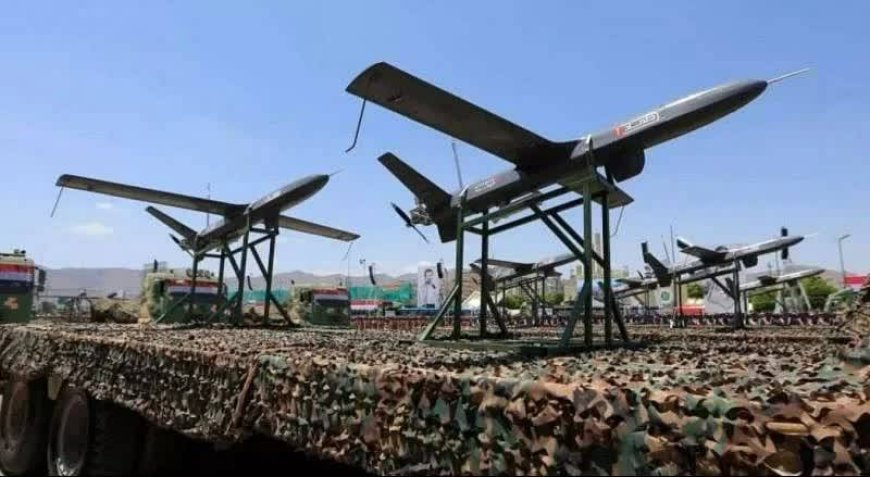The Unseen Hand of Yemeni Resistance: How Jaffa’s Drone Strike Shattered Israel's Air-Defense Mirage

In recent months, the Yemeni army has persistently declared that its indigenous UAVs and missile strikes have targeted the southern Israeli resort of Eilat, as well as the strategic port cities of Ashdod and Haifa. Nevertheless, it was the unprecedented assault on the occupied city of Jaffa last Friday, carried out by the Yemeni army's "Jaffa" drone, which exposed the vulnerabilities in Israel's much-vaunted multi-layered defense systems. Despite Israel's extensive and sophisticated defensive measures, developed over a protracted aggression against Gaza and technically supported by both Western and Arab allies, this Yemeni drone managed to penetrate these defenses, successfully striking a famous building in a bustling district of Jaffa.
This military feat highlighted two critical issues: first, the origins of the drone, and second, the ramifications of this operation for the Israeli regime and its potential responses. Predictably, the Israeli media and its western allies sought to downplay the event, dismissing it as a rare occurrence and denying the drone's Yemeni provenance, reiterating their accusations against Iran and alleging that Tehran supplies drones, missiles, and other weaponry to the Yemenis—a claim Iran steadfastly denies. As a matter of fact, over years of conflict with Saudi Arabia, the Yemeni army has achieved self-sufficiency in missile and drone technology, a testament to their military prowess.
Despite their attempts, the Israeli media could not conceal the glaring deficiencies in the regime's defense systems. The Hebrew-language daily "Calcalist," citing a high-ranking military source, compared the Yemeni drone strike on Tel Aviv to the catastrophic October 7, 2023, events for Israel's military capabilities and prestige. The attack, which saw a drone traverse over two thousand kilometers to strike deep within occupied Palestinian territories, represents a significant failure for Israel's air defense and signals the end of the "clear sky" era, highlighting the inefficacy of its layered defense systems.
Torbjorn Soltvedt, a senior analyst at Verisk Maplecroft, a risk intelligence firm, affirmed the growing capabilities of Yemeni resistance groups. The New York Times echoed these sentiments, discussing the Israeli regime's strategic dilemma in crafting an appropriate response to the Yemeni drone strike. Analysts suggest that a short-term cease-fire with Hamas could curb attacks from Hamas' Yemeni and Lebanese allies. Alternatively, Israel might align with American and British forces to retaliate, though such measures are unlikely to alter the Yemeni resistance's resolve to support the Palestinian civilians in Gaza. The New York Times further speculated that pressuring Iran could constrain Yemeni actions, positing that imposing costs on Tehran might temper its support for Yemeni resistance.
However, Tehran has escalated its military measures against Israel in the aftermath of Israeli aggression against the Iranian consulate in Damascus. The Jaffa operation demonstrated that even with extensive defense measures, a single Yemeni drone could breach the once impenetrable defense systems of Israel and its allies. This reality suggests that any attacks on Iranian interests, domestically or abroad, especially in the Red Sea, could provoke significant retaliatory measures.
Notably, recent events indicate a strategic shift, as the coordination between Iraqi and Yemeni forces has intensified, targeting deep inside occupied territories and disrupting maritime activities in both the Red Sea and Mediterranean. Simultaneously, the Islamic resistance in Iraq has issued stern warnings to the United States about resuming attacks on US bases, while Lebanon's Hezbollah activities in the north have led to increased Israeli displacement.
In the meantime, in Gaza, the Palestinian resistance has transitioned from defensive operations to proactive assaults on Israeli occupation forces. This shift includes an uptick in ambushes, guerrilla tactics, and rocket attacks on Zionist settlements, signaling a new phase in the resistance's strategy.
In conclusion, the precisely orchestrated operation in Jaffa heralds an imminent wave of Yemeni drone operations. The deliberate targeting of a site near the American Embassy underscores a calculated move supported by Hezbollah’s comprehensive target database. This operation manifests a unified front against the Israeli regime, marking a significant advancement in the Axis of Resistance's tactical prowess and strategic sophistication.













































